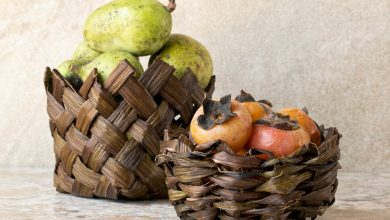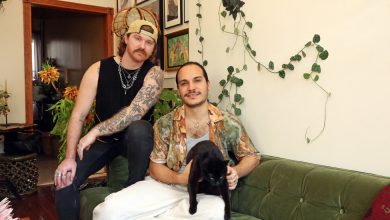This Seed Season, Consider a Catalog That Takes a Different Approach

It takes a village, not a threshing machine, to complete the harvest of pounds of watermelon seeds that will fill the simple, white packets sold by Turtle Tree Seed.
“Nobody minds helping with the watermelon-seed collection,” said Lia Babitch, the seed company’s co-manager. She’s not just talking about their crew: Residents of Camphill Village, in Copake, N.Y., where Turtle Tree is headquartered, are happy to join in.
It’s a pretty sweet task, after all, that involves eating the fruit of yellow-fleshed Early Moonbeam, or perhaps an heirloom like Moon and Stars, and spitting the seeds into cups provided for that purpose — the first step before washing, drying and eventually packing them for sale.
Like everything else at Camphill Village Copake, a nonprofit intentional community of adults with developmental differences, collecting seed is part of the “life-sharing” model of the place, which was founded in 1961. This is the largest Camphill community in the United States, home to some 230 people; today, there are about 100 Camphill communities worldwide.
Inclusion is the guidepost. There is a hands-on role for everyone, whatever their abilities, in each step of the work at the various village businesses, including the seed catalog, which features approximately 400 varieties of vegetables, flowers and herbs.
Everyone on the team of about 18 full- and part-time staff members knows what it feels like to contribute to the effort that sent nearly 30,000 seed packets to more than 200 farms and 4,500 gardeners in the past year.
“‘We have many hands,’ we always say,” Ms. Babitch said.
That means tasks are often accompanied by chatting and laughter — by the sounds of connection to the seed and to one another — rather than the din of farm machinery.
“We don’t try to mechanize,” she said, but “to break down every job into contingent parts, so that every person can do what they can.”
Those tasks include includes sowing and weeding, harvesting and seed-cleaning, and even testing each seed crop’s viability. A set of handmade, glazed ceramic slabs — one with 100 thumbprint-size depressions and another with 50 — empowers anyone wishing to pitch in to count out the number of seeds required for a germination test.
At every step, she said, “we work side by side,” producing most of the catalog’s seed on site.
All of the Turtle Tree seed varieties are open-pollinated, not hybrids, and all are biodynamically grown, adhering to guidelines sometimes described as “premium organic.”
“You can’t do any of the bad stuff that you’re not allowed to do in organics,” Ms. Babitch said. “But then there’s a whole bunch of stuff that you are supposed to do, that are optional in organic.”
It’s not enough to simply forgo chemical fertilizers, for instance. Biodynamic farms don’t buy bagged amendments, even those approved for organic use. Instead, they grow their own fertility, raising animals for their manure and planting cover crops, or green manure, and making compost as mindfully as the crops are cultivated.
“It’s not something you can just buy in a package,” Ms. Babitch said. “You have to do it.”
Peas, Beans and Broccoli with a Difference
Many of the seed varieties that Turtle Tree offers have more of a sense of the artisanal than of agribusiness.
That includes Piracicaba broccoli, which doesn’t form huge heads all at once to harvest by machine in a day and ship to market, the mass-scale formula of commercial agriculture. Instead, it makes a small head followed by weeks of side shoots — just the right amount to provide an extended supply of fresh-picked dinner portions.
“It’s not great for mechanized systems and large-scale farming,” Ms. Babitch said. “But it’s great for home gardens.”
So is the Schoenbrunn Gold Cape gooseberry (Physalis peruviana), which isn’t a gooseberry or much like the other Physalis varieties that gardeners may know as ground cherries. The fruits — which the catalog describes as offering “tastes of guava, passion fruit, mango and citrus” — don’t fall to the ground when ripe, but hang inside papery husks on the shrubby plants.
Rolanka carrots, an excellent storage variety, haven’t found a commercial niche, either. They can reach up to a pound each, with rich, strong carrot flavor and deep orange color.
There’s also a pea of a different color: the Swiss heirloom Schweizer Riesen, or Swiss Giant. Turtle Tree, which is marking its 25th anniversary at Camphill Copake, introduced the variety to the United States as one of its original catalog offerings.
On six-foot vines, this plant produces showy, bicolor flowers of pink and burgundy, followed by oversized, sweeter-than-average pods — like extra-large snow peas, but best for eating once the peas have begun to form inside, for a sort of snow-snap combination pea experience.
Then there’s a real keeper of a Butternut winter squash: Over the years, Ms. Babitch and her Turtle Tree co-manager, Ian Robb, have developed a version of the familiar Cucurbit that can be stored much longer than most. The seed they save to sell or replant is taken from the fruits of the most productive plants that held up longest in storage, some of them retaining their firmness and good taste through the following May.
As for green beans, Turtle Tree’s must-have is Aunt Ada’s, a distinctive Italian pole variety.
“Don’t be worried when the seeds show in the pods,” Ms. Babitch will tell anyone who has never grown this heirloom, which made its way to Colorado with immigrants around 1900.
Even with her disclaimer, the sight of the bulging, bean-filled, three-inch pods may trigger the feeling that they’ll be fibrous, and past their prime. To the contrary, they are delicious steamed whole or used in vegetable soup, as an all-in-one ingredient, providing bean as well as green. Yet another option: Let them mature and dry on the six-foot vines, shelling them for use as dried beans.
Some Basics of Biodynamics
The principles behind biodynamic gardening and farming — and behind Camphill — are based on anthroposophy, the teachings of the philosopher and scientist Rudolf Steiner.
In June 1924, he gave a series of eight lectures that became the foundation of biodynamic agriculture. As part of his course, he offered formulations for biodynamic preparations — “herbal remedies for the earth, basically, and for the plants,” Ms. Babitch said, including ones to enliven compost that are made from yarrow, chamomile, stinging nettle, oak bark, dandelion and valerian.
Another tool in biodynamic growing is the North American-focused Stella Natura calendar, inspired by research by Maria Thun, a German biodynamic farmer, beginning around 1950. This approach factors in the influence of the phases of the moon and the zodiacal constellation the moon is in front of at any given time. Plants are broken down into four groups, each correlating to certain moments in the monthly planetary cycles, indicating the best time to plant or tend something in that group to capitalize on a particular cosmic energy.
There are “root days,” for working with plants grown for their roots or root-like qualities (kohlrabi and onions, for example), and “leaf days” (for the likes of lettuce and cabbage). “Fruit days” are best for any plant that produces an edible part after flowering (including peas, tomatoes, squash and raspberries). “Flower days” are for flowers, of course, but also less obvious plants whose immature flower heads we cultivate as food, including broccoli and cauliflower.
Packets of the biodynamic preparations and copies of the 2024 Stella Natura calendar are available through the catalog, which is at the printer now. And additional seed varieties are uploaded every day to the Turtle Tree website, as a new seed-selling season begins.
A Blooming Bargain: Dahlias from Seed
Although Turtle Tree’s seed assortment is heavy on vegetables, “Ian and I both really love flowers,” Ms. Babitch said, “and can’t help adding more.”
For summer bouquets or drying, the Turtle Tree Helichrysum mix blends yellows and whites, pale to dark pinks, and coppery colors.
Gladiolus corms are also listed in the catalog for 2024, a new offering for which the team has been building up stock. The dahlia seedling mix is another favorite — many-colored and heavy on the single-flowered daisylike blooms that attract pollinators.
“You can just plant a hedge of them, because you’re not buying individual tubers for $10 a pop,” Ms. Babitch said. “You can have 30 or 50 plants for a couple of dollars.”
As if to encourage experimentation, there are various samplers — minipacks and multipacks for $5 or $15 — with small portions of five themed crops. Try a diversity of winter squash or heirloom tomatoes, an assortment of essential herbs or one of flowers that appeal to butterflies.
When customers get in touch late in the season to ask how to save seed from the plants they grew from a packet of Turtle Tree seed, Ms. Babitch knows the catalog’s message is resonating.
“Vegetable gardening is like babysitting, and saving seed is like having kids,” she said, repeating a piece of wisdom shared with her years ago.
Yes, maybe it means one less seed packet will be sold in the coming year. But it’s a victory: another set of hands joining in the extended mix, in the ever-widening circle of people-to-plant relationships.
Margaret Roach is the creator of the website and podcast A Way to Garden, and a book of the same name.
For weekly email updates on residential real estate news, sign up here.





